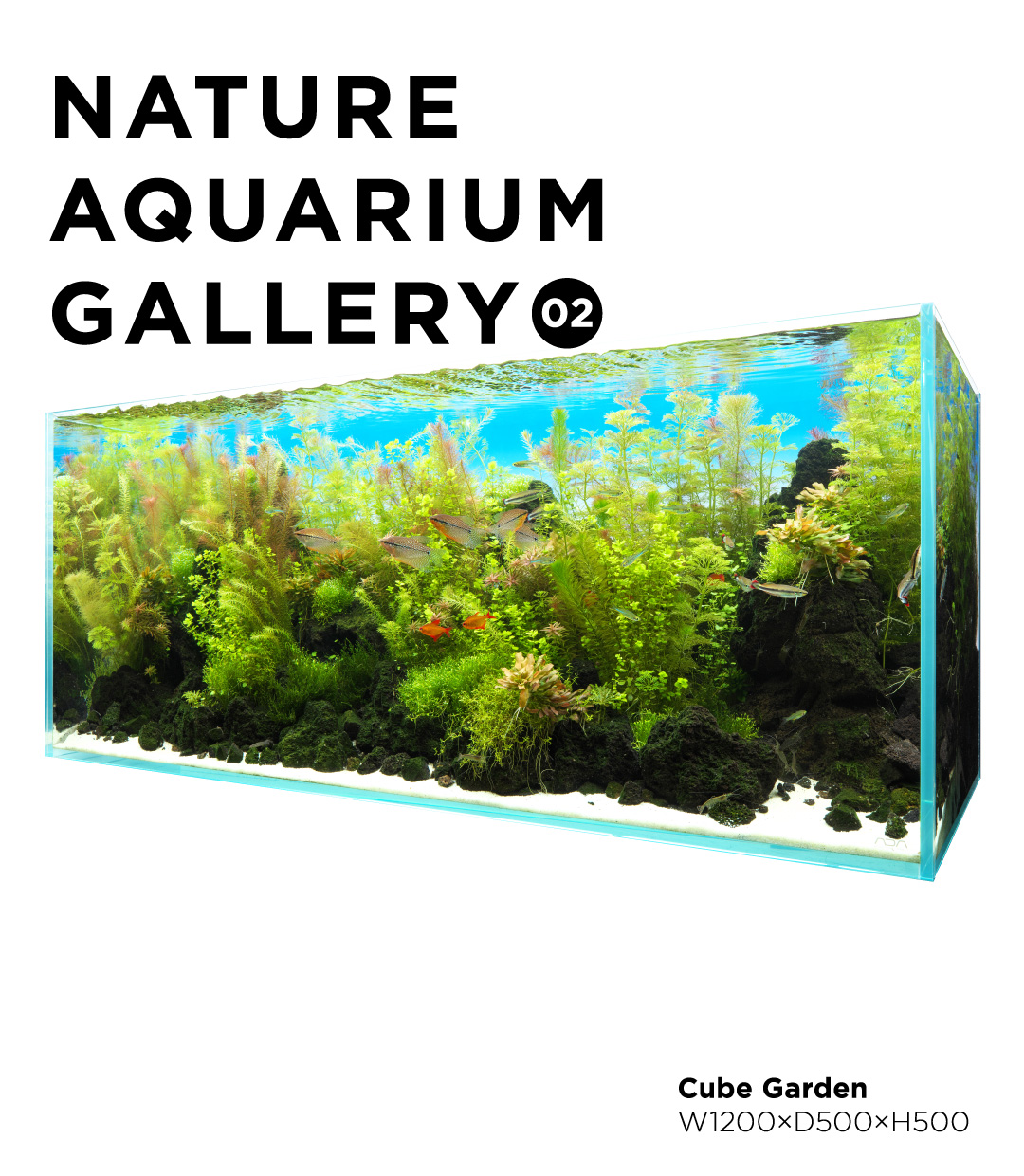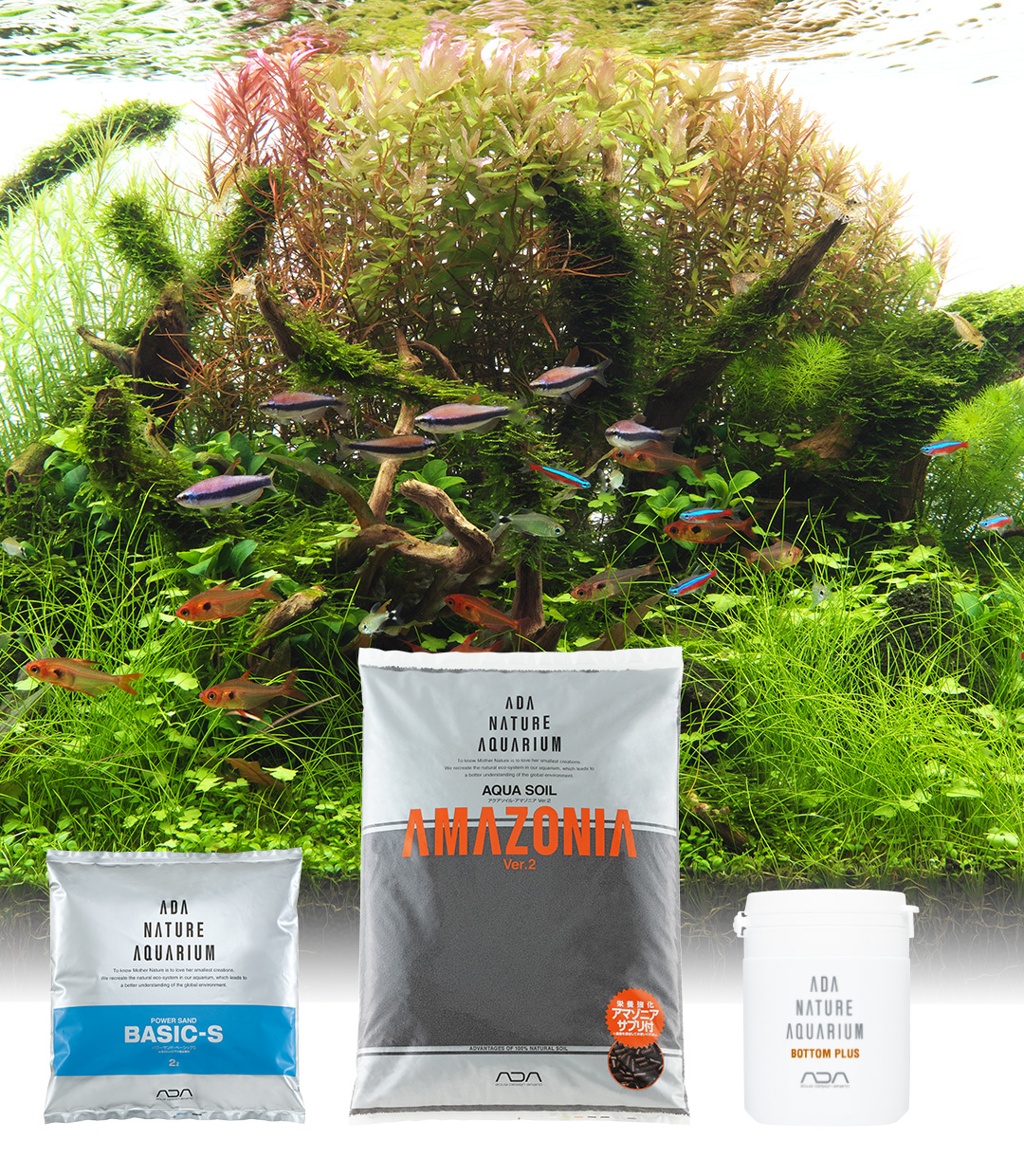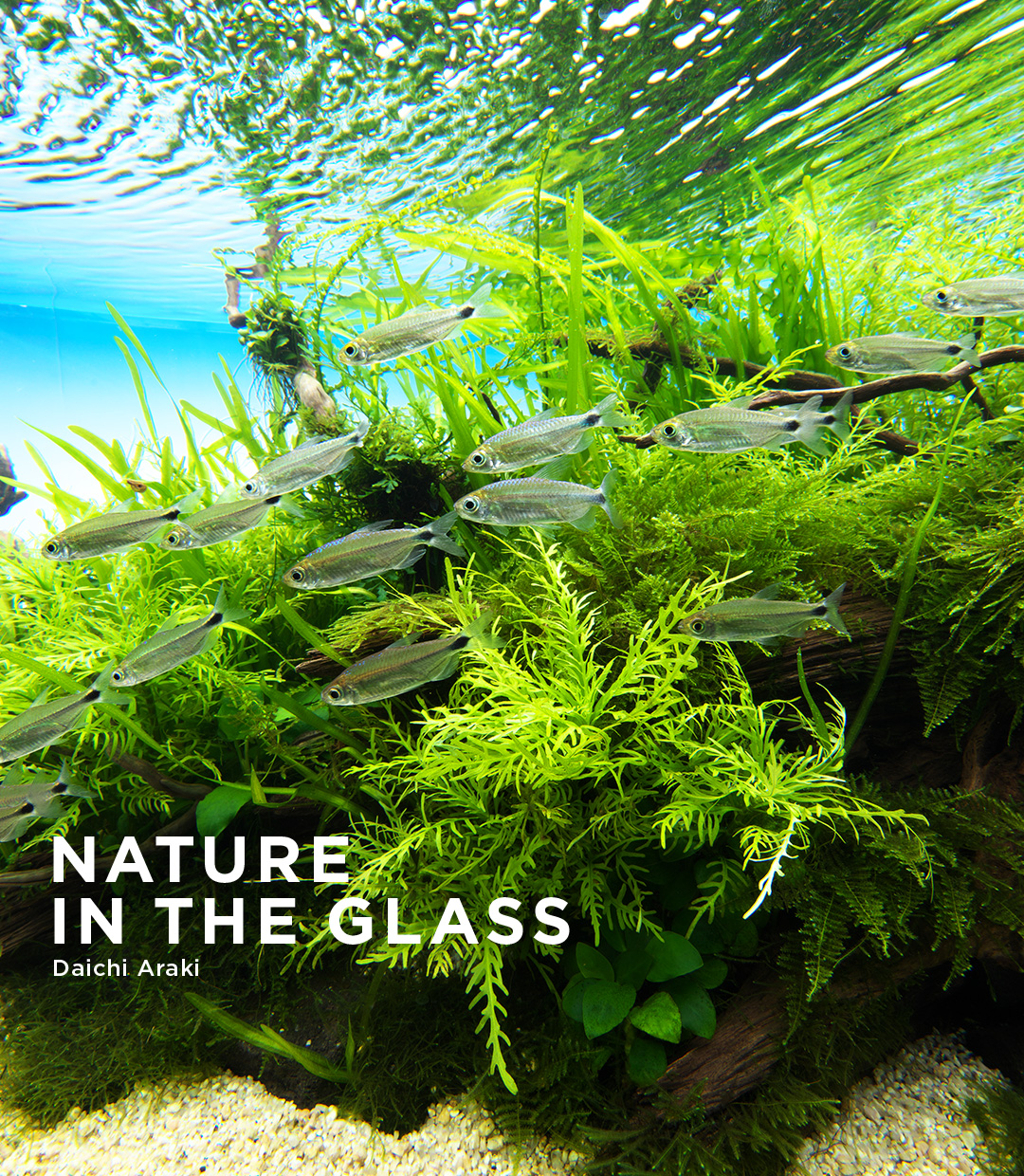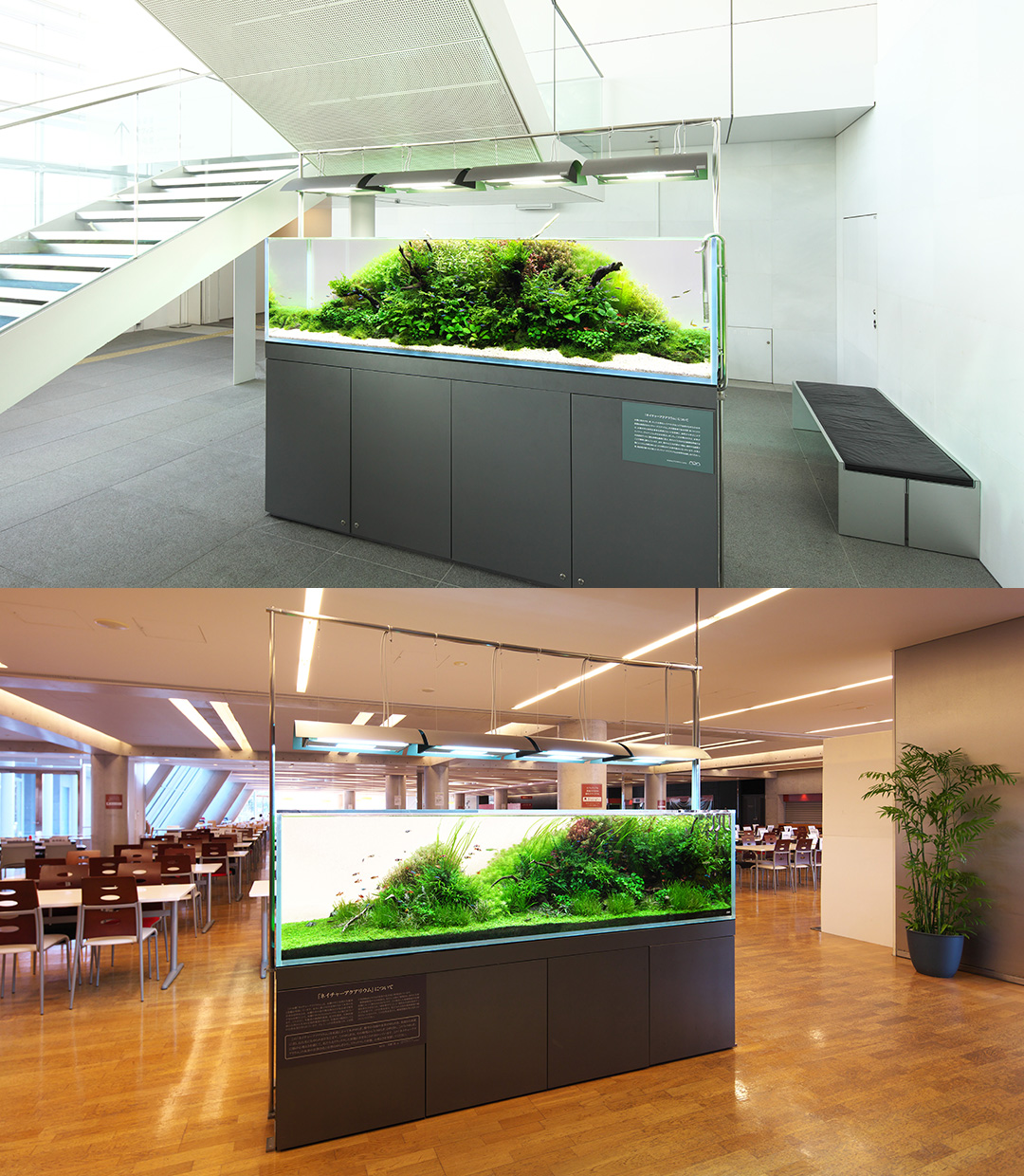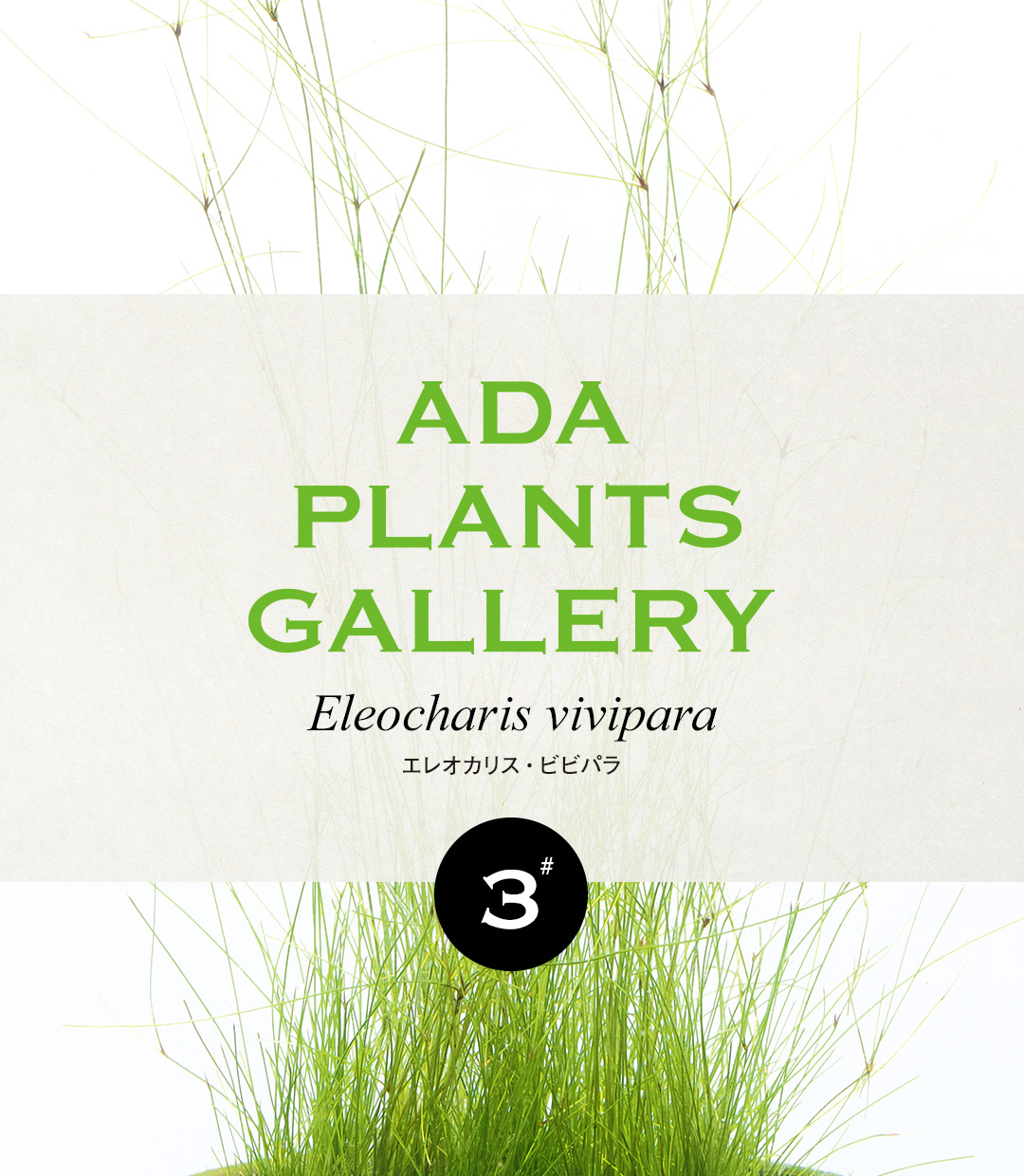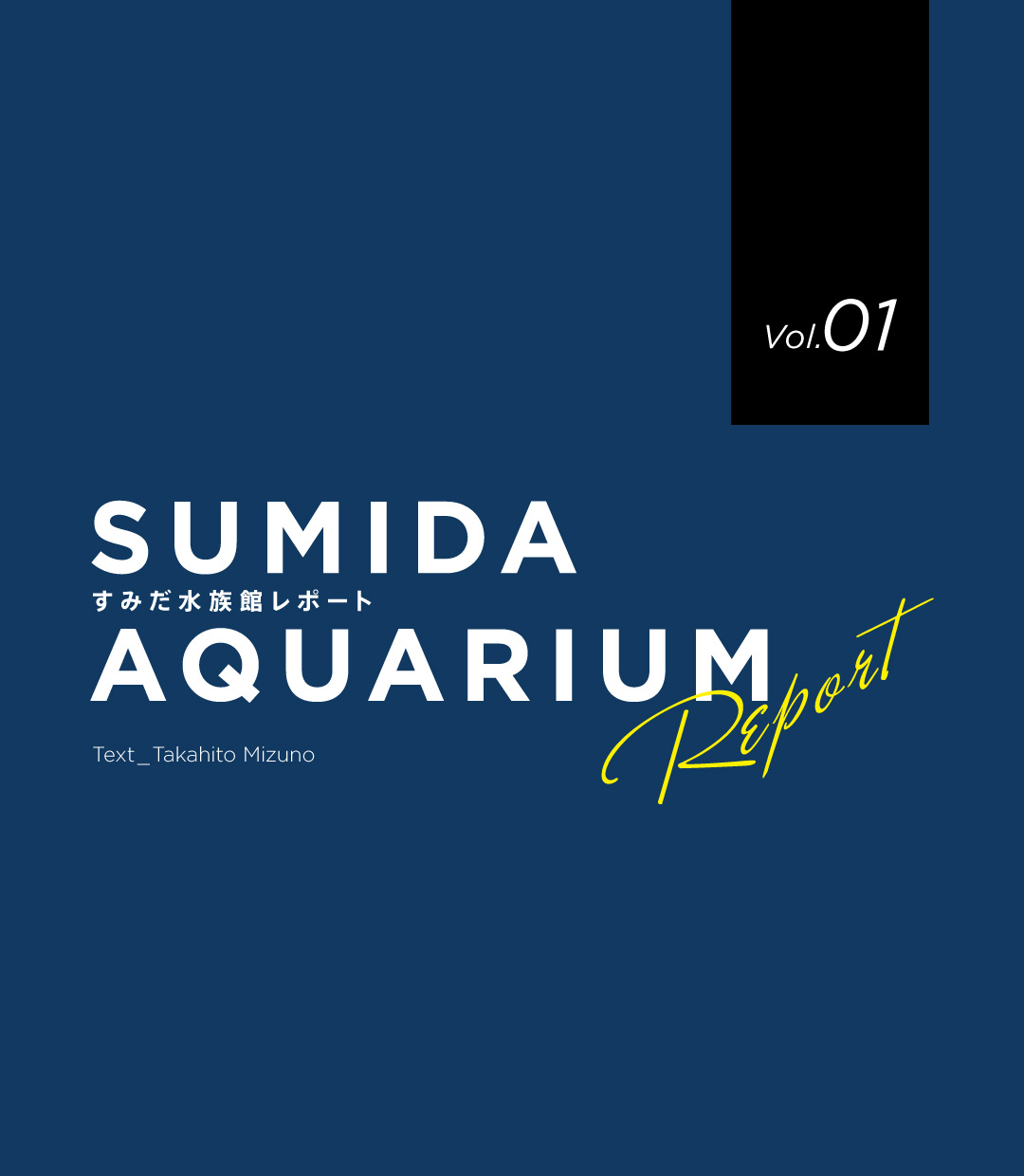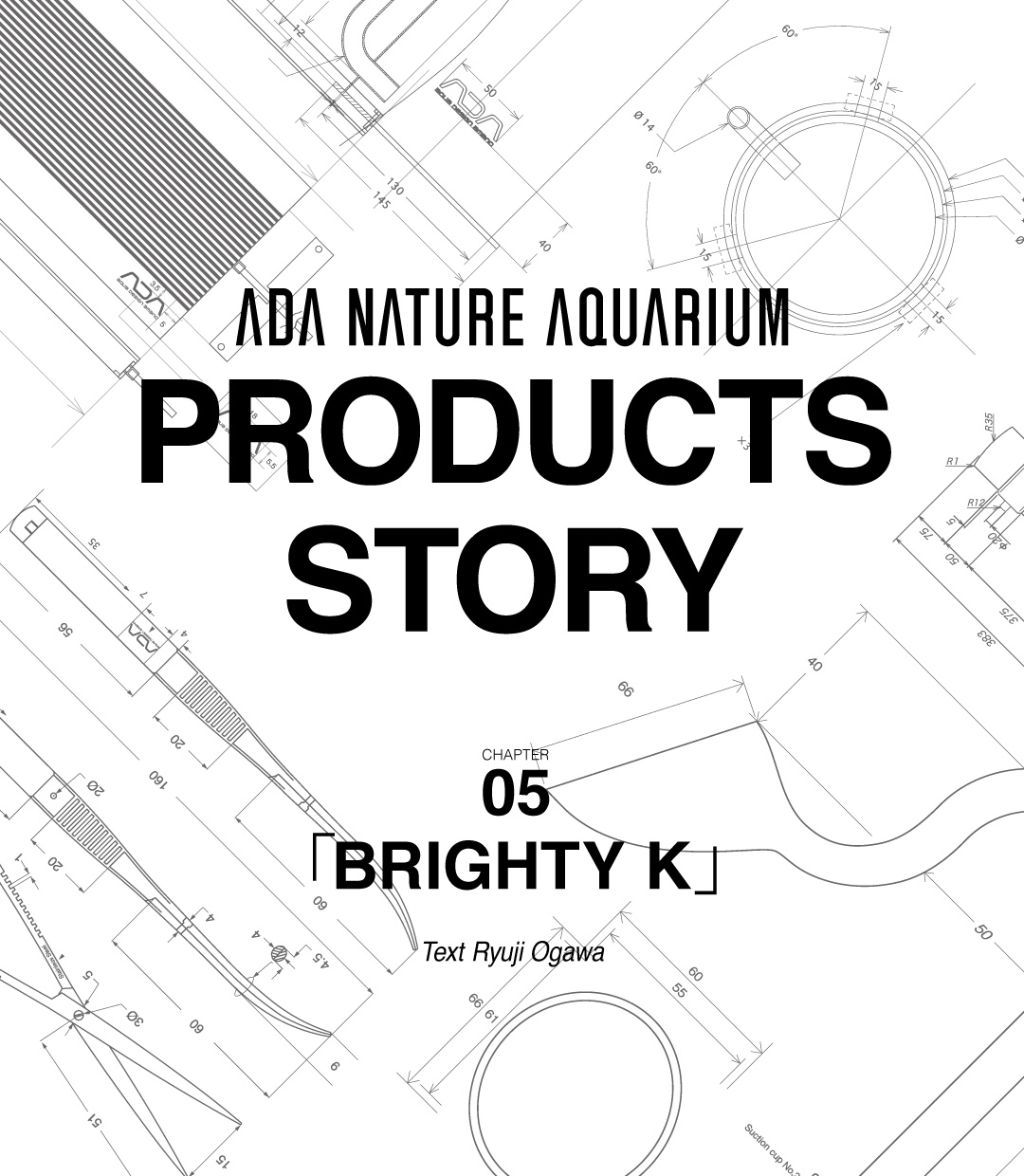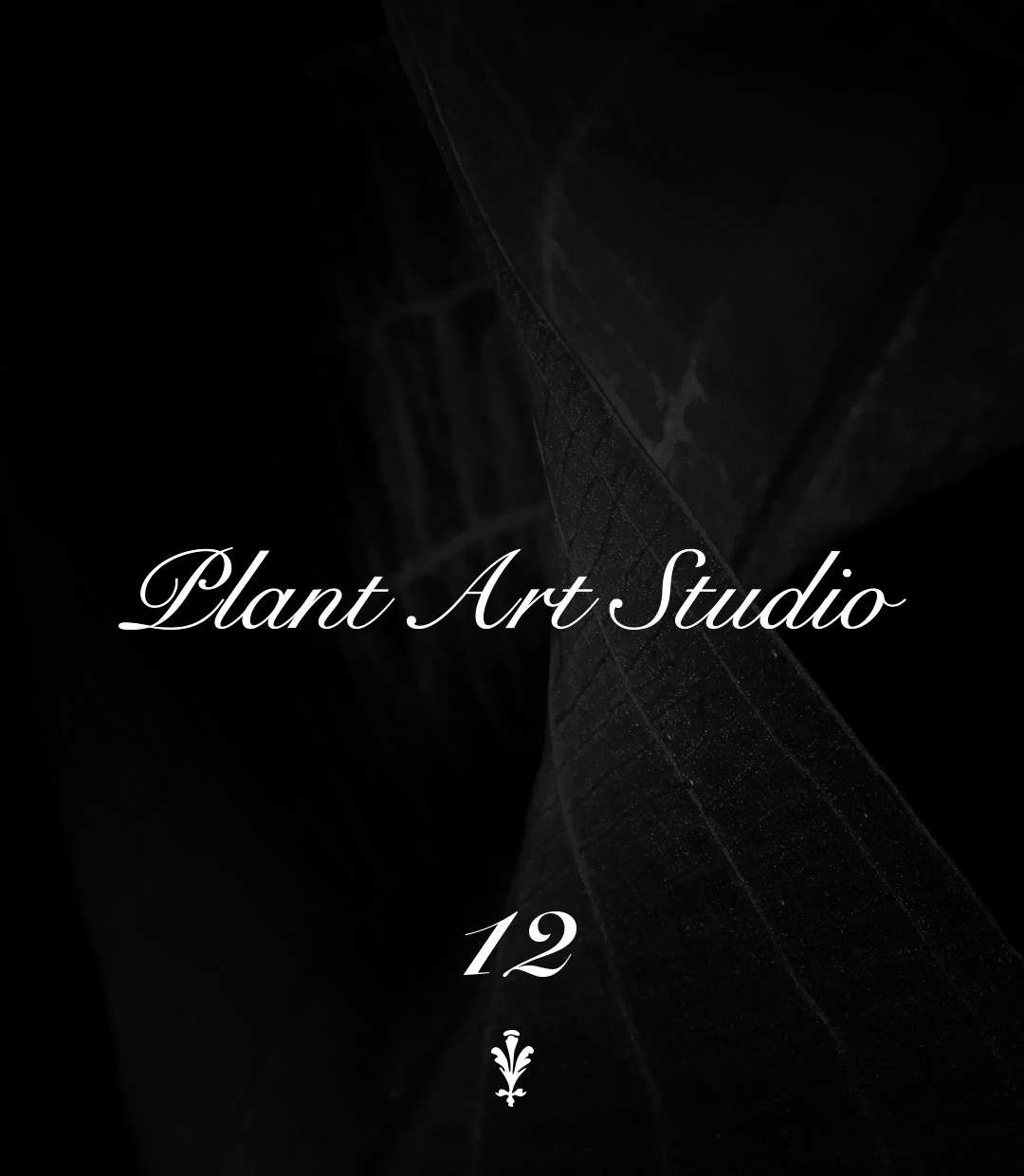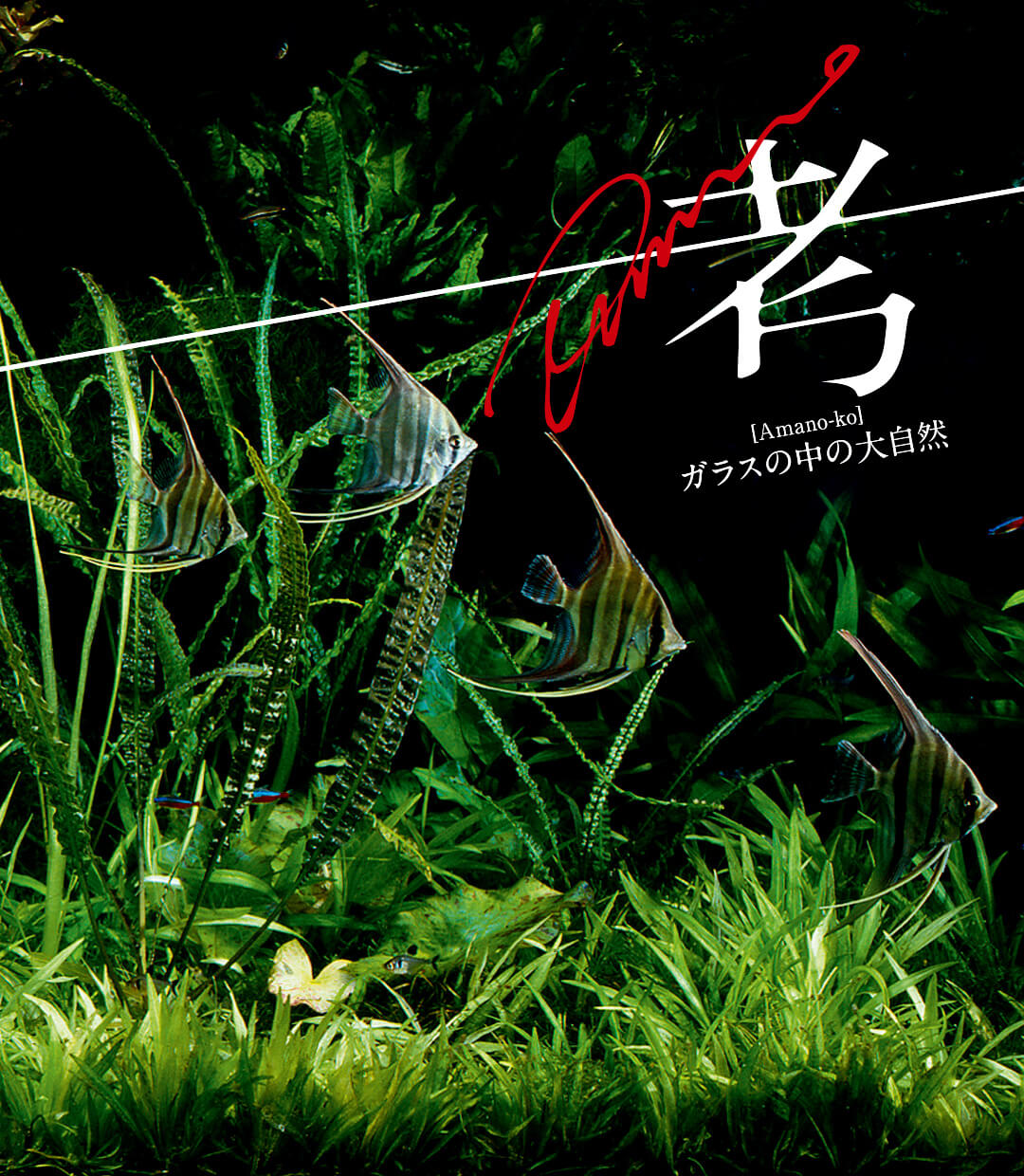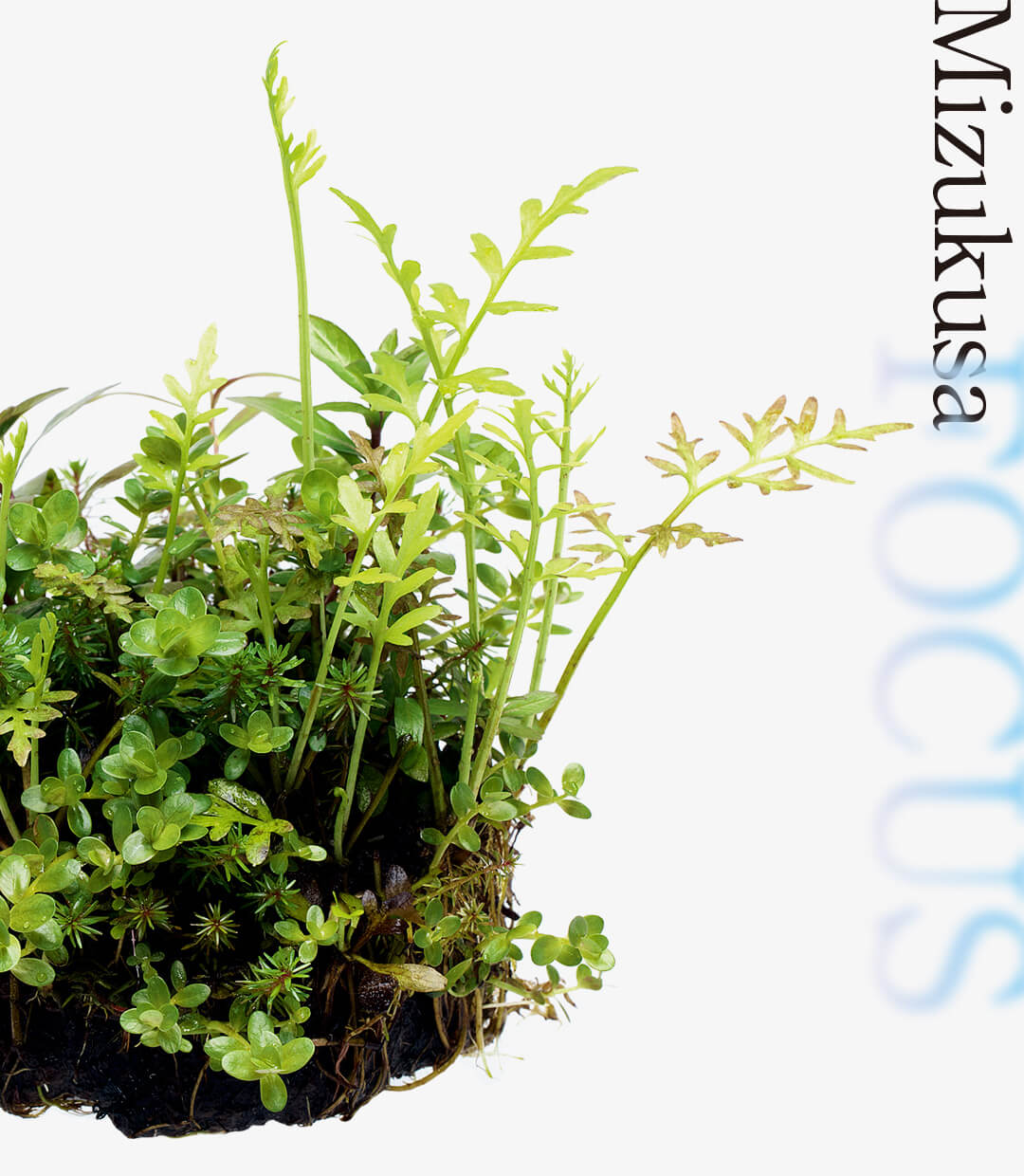NATURE IN THE GLASS ‘Nestling up to an old tree’
Metabolism of life that changes over time
I created this aquascape as envisioning how a massive tree fell down in the deep forest, and new plants and trees started growing over time. The fallen tree is covered by moss in the gentle flow of time, and the young trees growing around the fallen tree make us feel the transition of life. The theory in Nature Aquarium is to arrange a layout with driftwood of the same type not to make it look unnatural. However, I intentionally used 2 types of driftwood for this layout and executed vegetation succession. I laid a large piece of Horn Wood on its side to resemble a fallen tree, and used pieces of Branch Wood that grow upwards to resemble young trees that are sprouting.
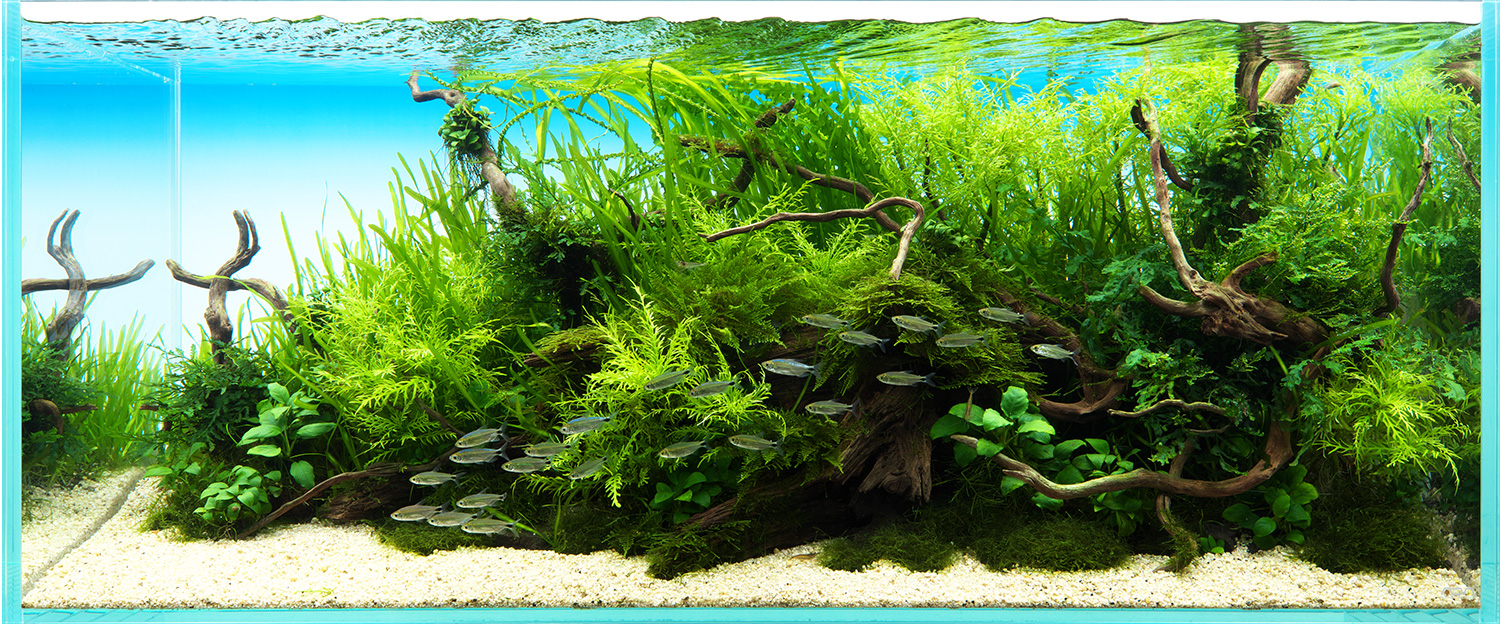
DATA
Shooting date: March 25th, 2021(ADA)
Creator: Daichi Araki
Aquarium: Cube Garden W120×D50×H50(cm)
Lighting: Solar RGB x 2, turned on for 8.5 hours per day
Filter: Super Jet Filter ES-1200 (Bio Rio G)
Material: Horn Wood, Branch Wood, Sansui Stone
Substrate: Aqua Soil – Amazonia Ver.2, DOOA Tropical River Sand, Power Sand Advance M, Bacter 100, Clear Super, Tourmaline BC
CO2: Pollen Glass Beetle 40Ø, 5 bubbles per second via CO2 Beetle Counter (using Tower)
Aeration: 15.5 hours after the light is turned off using Lily Pipe P-6
Additives: Brighty K, Green Brighty Mineral, Green Brighty Iron, Green Brighty Nitrogen
Water change: 1/3 once a week
Water quality: Temperature: 25ºC; pH: 6.2; TH: 50 mg/l
Plant
Aponogeton longiplumulosus
Crinum calamistratum
Vallisneria spiralis
Vallisneria nana
Hygrophila odora
Bolbitis heudelotii
Vesicularia sp.
Anubias barteri var. nana
BIO Mizukusa no Mori Anubias barteri var. nana ‘Petite’
BIO Mizukusa no Mori Taxiphyllum barbieri
Fish
Alestopetersius smykalai
Crossocheilus oblongus
Otocinclus sp.
Caridina multidentata
Expressing a decayed tree and sprouting young trees with 2 types of driftwood
As a method for expressing an old tree and young trees in the forest in the passage of time, I created the layout with 2 types of driftwood. I laid a piece of Horn Wood to resemble a massive fallen tree, and winded Taxiphyllum barbieri mixing with voluminous Vesicularia sp. to give a mossy impression. The reason why I hid the right end of the driftwood with plants was because I intentionally wanted to make a large broken tree look as if leading up to a bush. I attached just a little bit of Taxiphyllum barbieri to the pieces of Branch Wood leaned against the fallen tree in order to create an impression of young trees, and used Anubias barteri var. nana ‘Petite’ that has small leaves to give an impression of new sprouts.
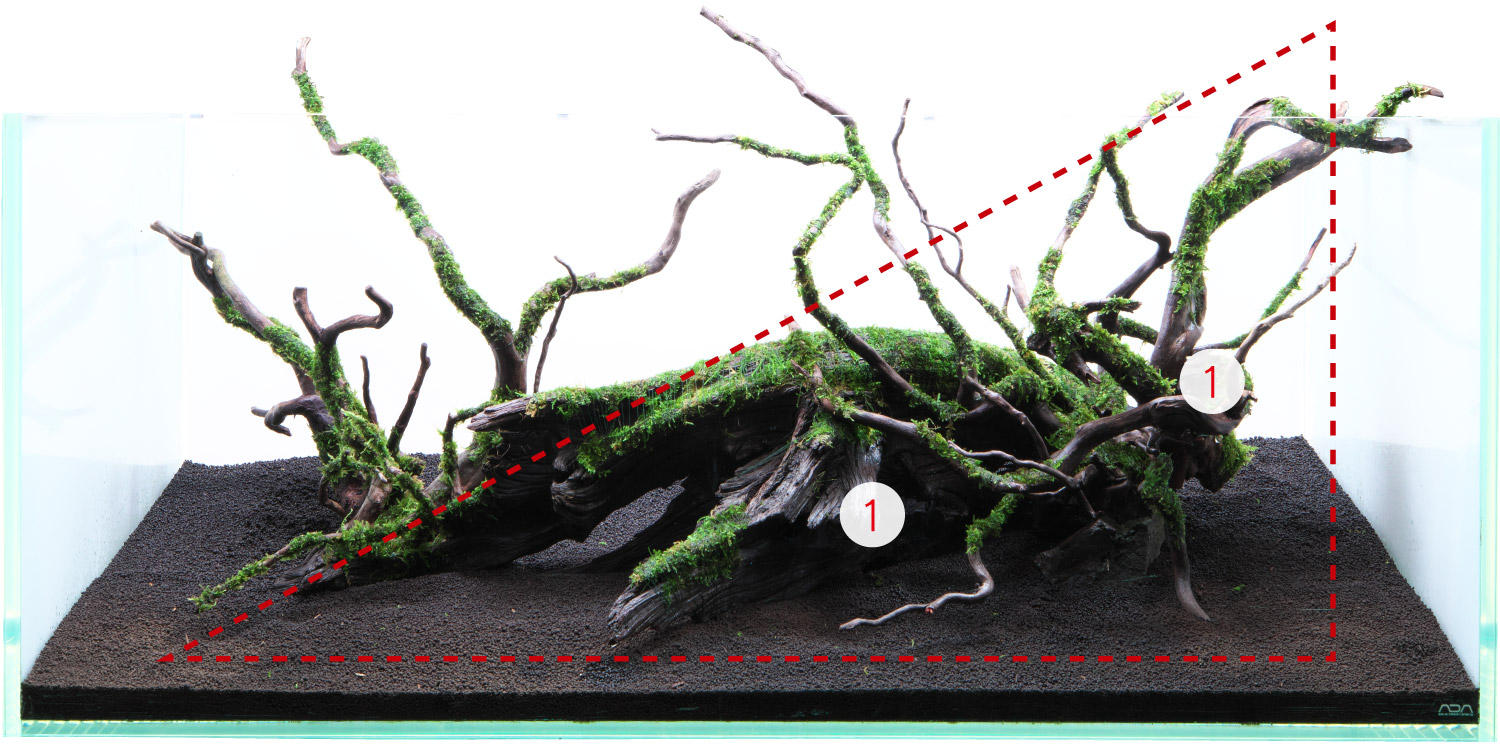
Composition Idea
Although I envisioned an aquascape with a convex composition at the conceptual stage, I changed it to a triangular composition to make the size of the fallen tree stand out more when arranging the pieces of driftwood.
Photo taken on January 14, 2020
Although I envisioned an aquascape with a convex composition at the conceptual stage, I changed it to a triangular composition to make the size of the fallen tree stand out more when arranging the pieces of driftwood.
Photo taken on January 14, 2020
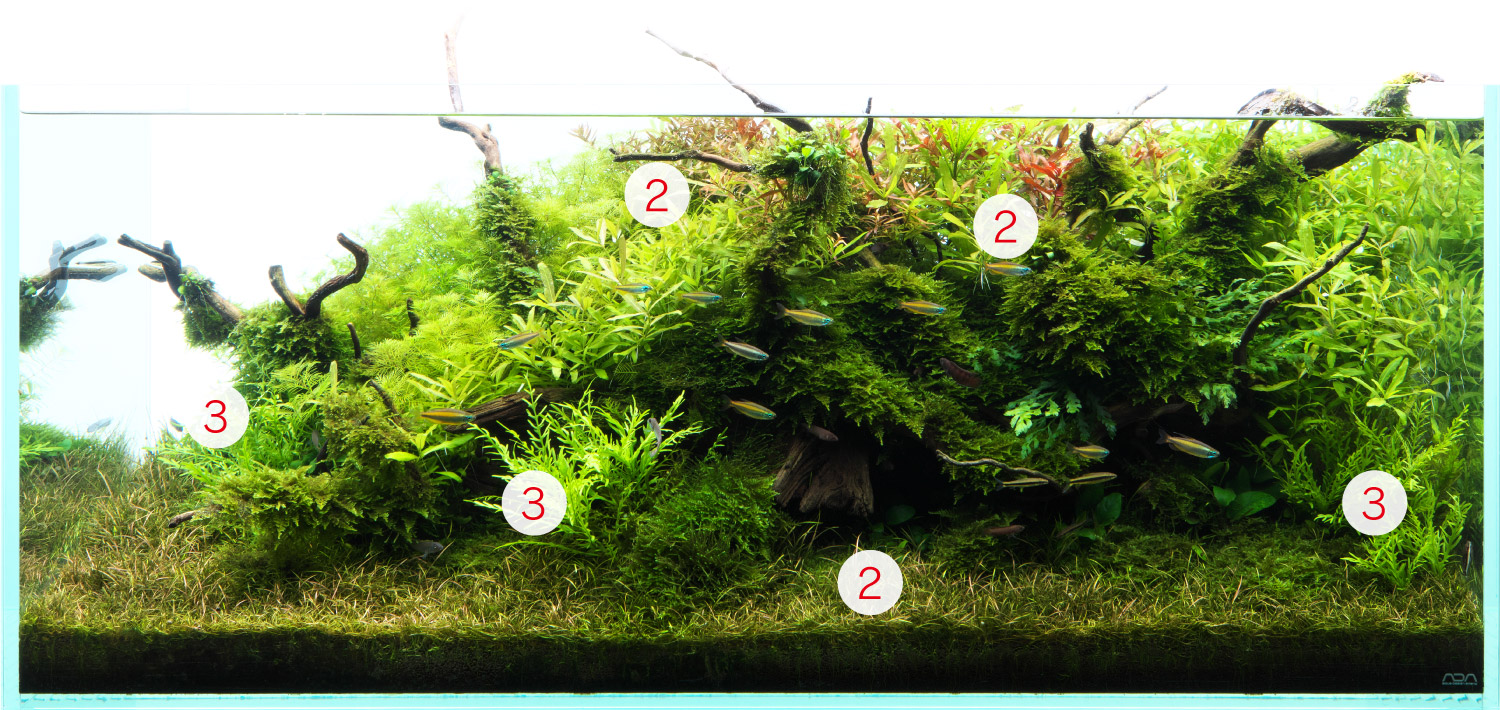
How the layout looks after 4 months from setting up / Photo taken on May 1, 2020
ⒸAQUA DESIGN AMANO
ⒸAQUA DESIGN AMANO
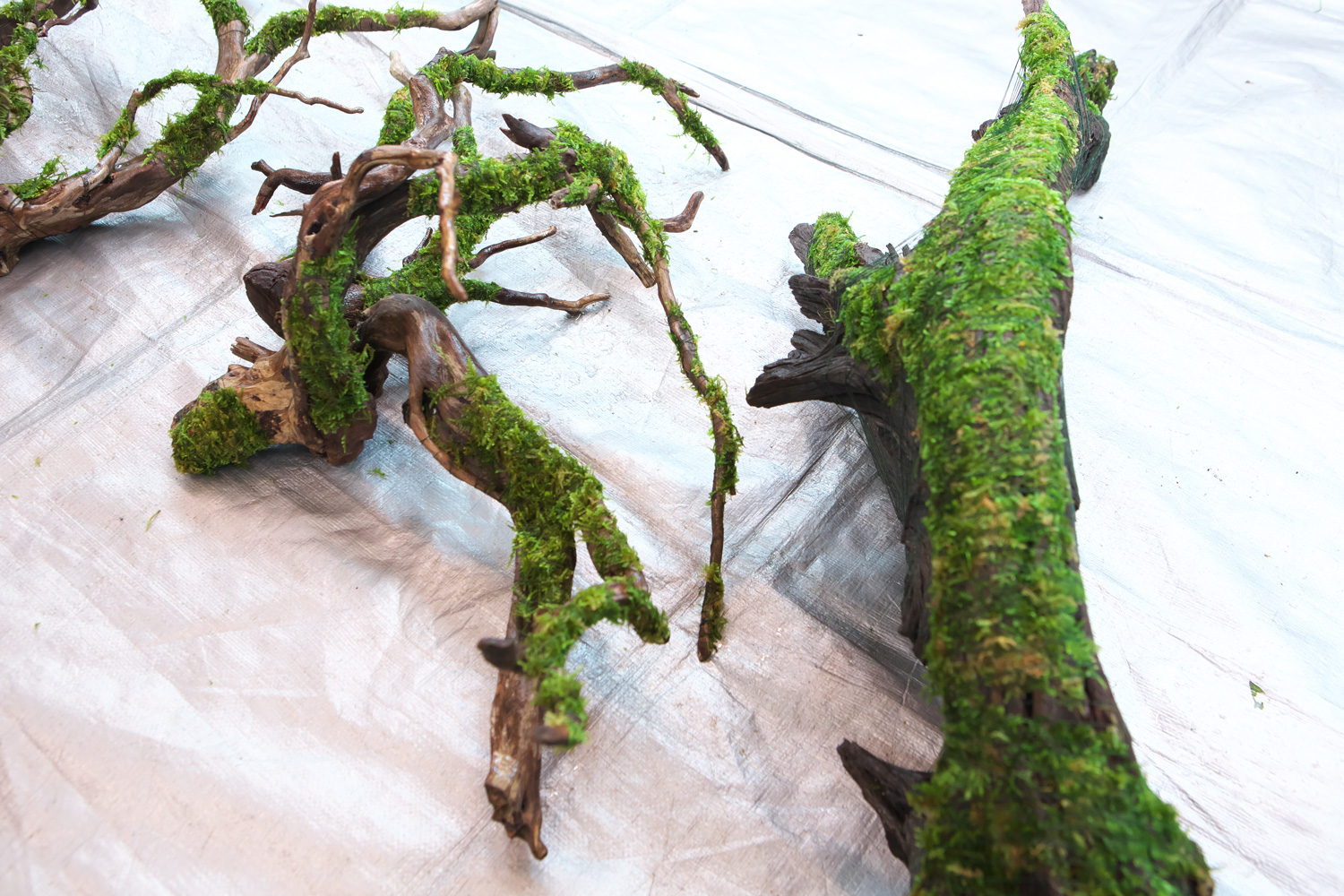
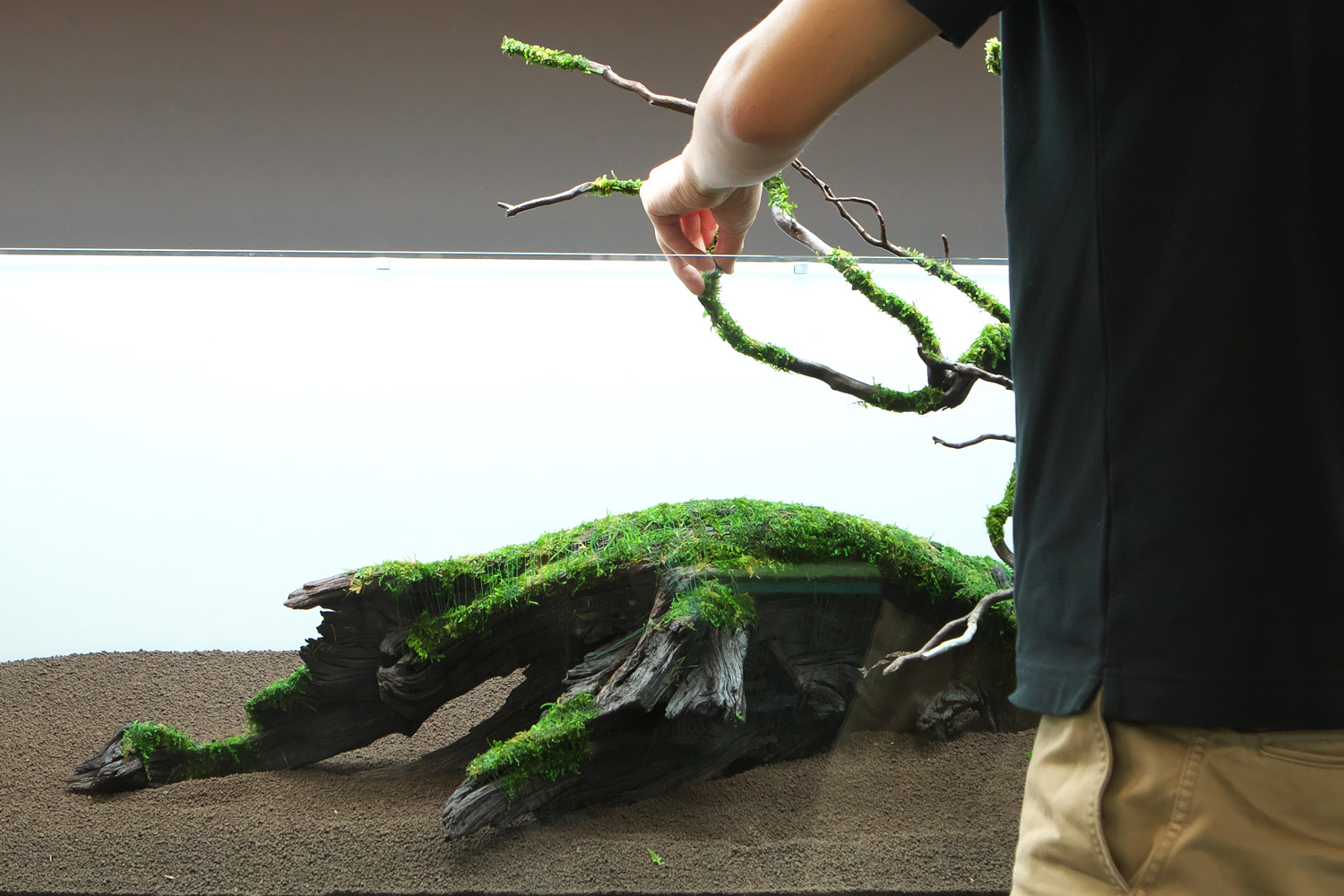
①Use of 2 types of driftwood
If there is a clear theme, it still looks natural even with different types of materials. I express a fallen tree with a large piece of Horn Wood and young trees with pieces of Branch Wood.
If there is a clear theme, it still looks natural even with different types of materials. I express a fallen tree with a large piece of Horn Wood and young trees with pieces of Branch Wood.
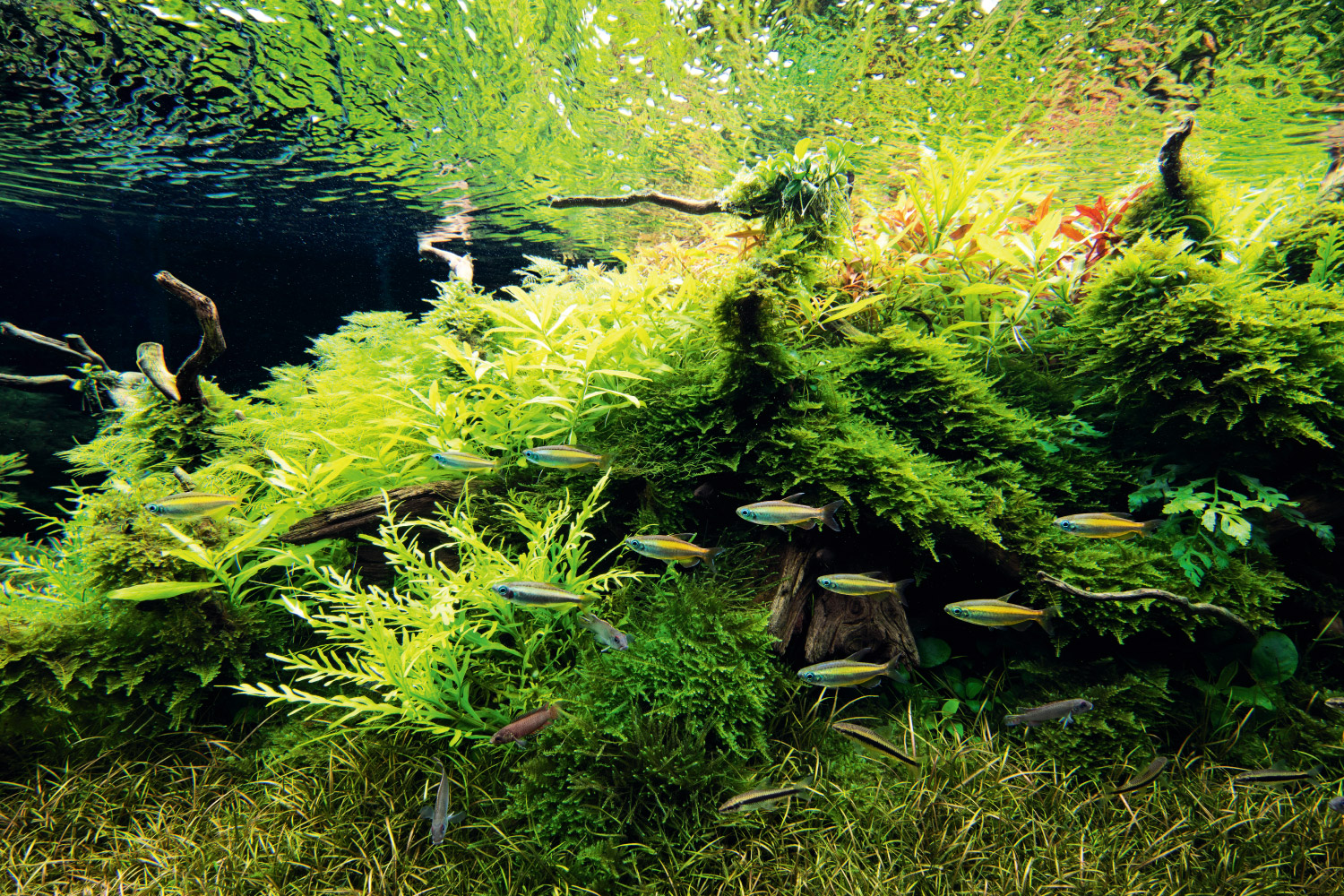
②Expressing young trees full of life
To express a fresh impression that new lives are born with and diversity, I planted 4 stem plant species with different colors and brightness. It looks even more vibrant.
To express a fresh impression that new lives are born with and diversity, I planted 4 stem plant species with different colors and brightness. It looks even more vibrant.
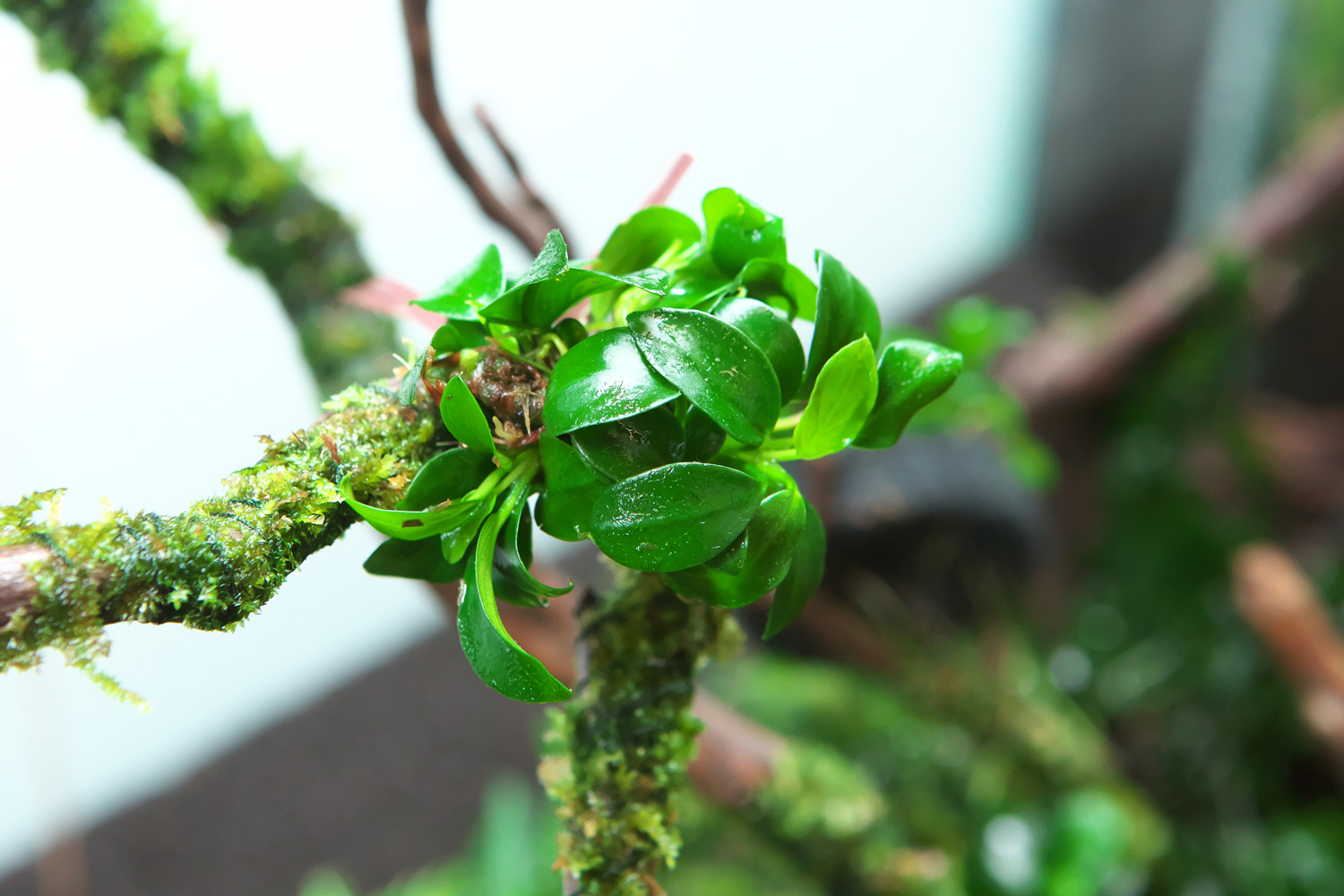
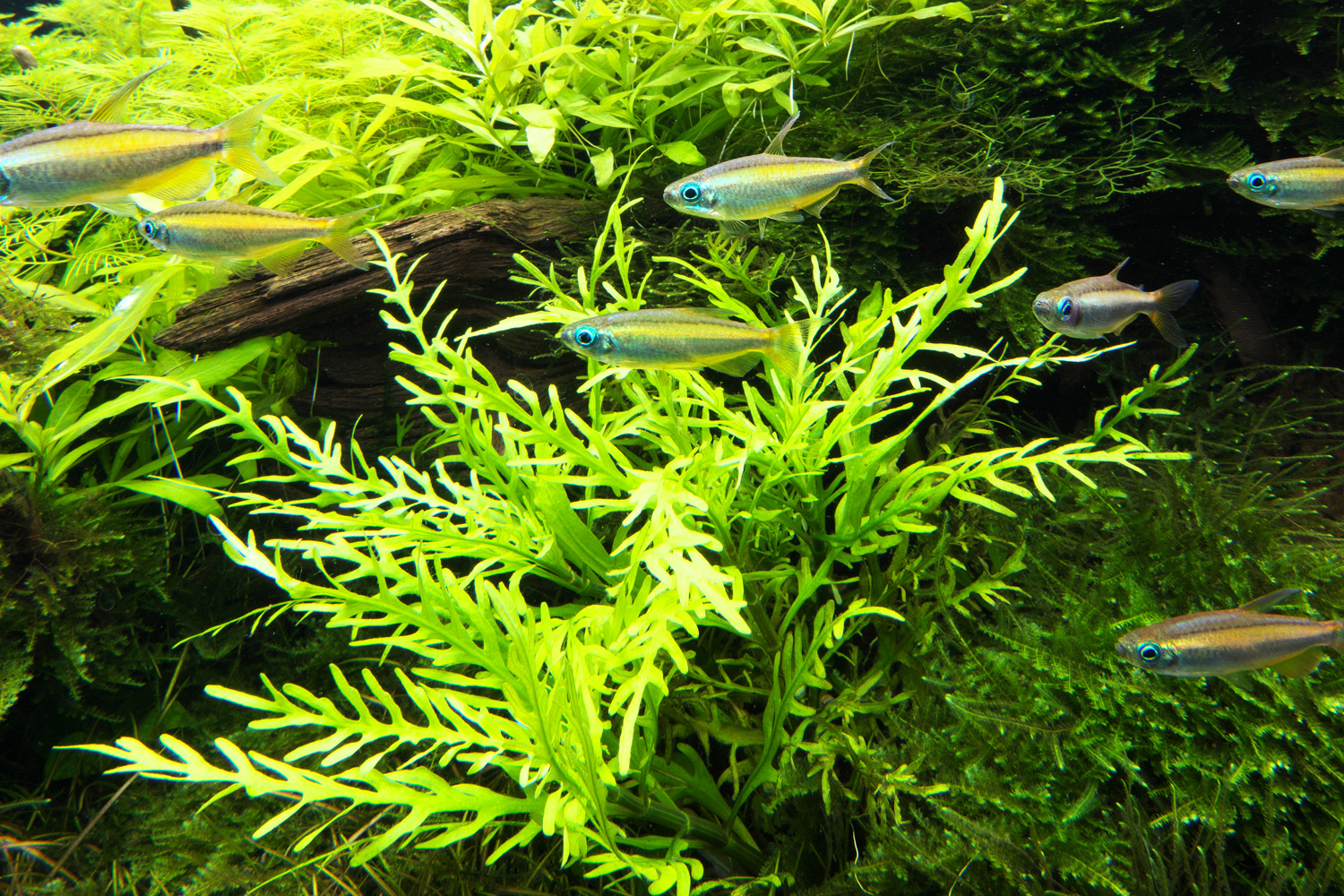
③Hygrophila odora
It is an aquatic plant with distinctive shaped leaves. It grows relatively large. However, because the growth is slow, and it is easy to control its size by picking, I used it as a midground plant.
It is an aquatic plant with distinctive shaped leaves. It grows relatively large. However, because the growth is slow, and it is easy to control its size by picking, I used it as a midground plant.
Wild aquascape with outstanding driftwood to enjoy the change of impressions with creative plant re-arranging
Plants are unified with green color, and the layout is reborn as an aquascape full of refreshing feeling and wildness from the vibrant aquascape with stem plants in the background. We interviewed a SUIKEI creator, Daich Araki about his intention for the creative plant re-arranging.
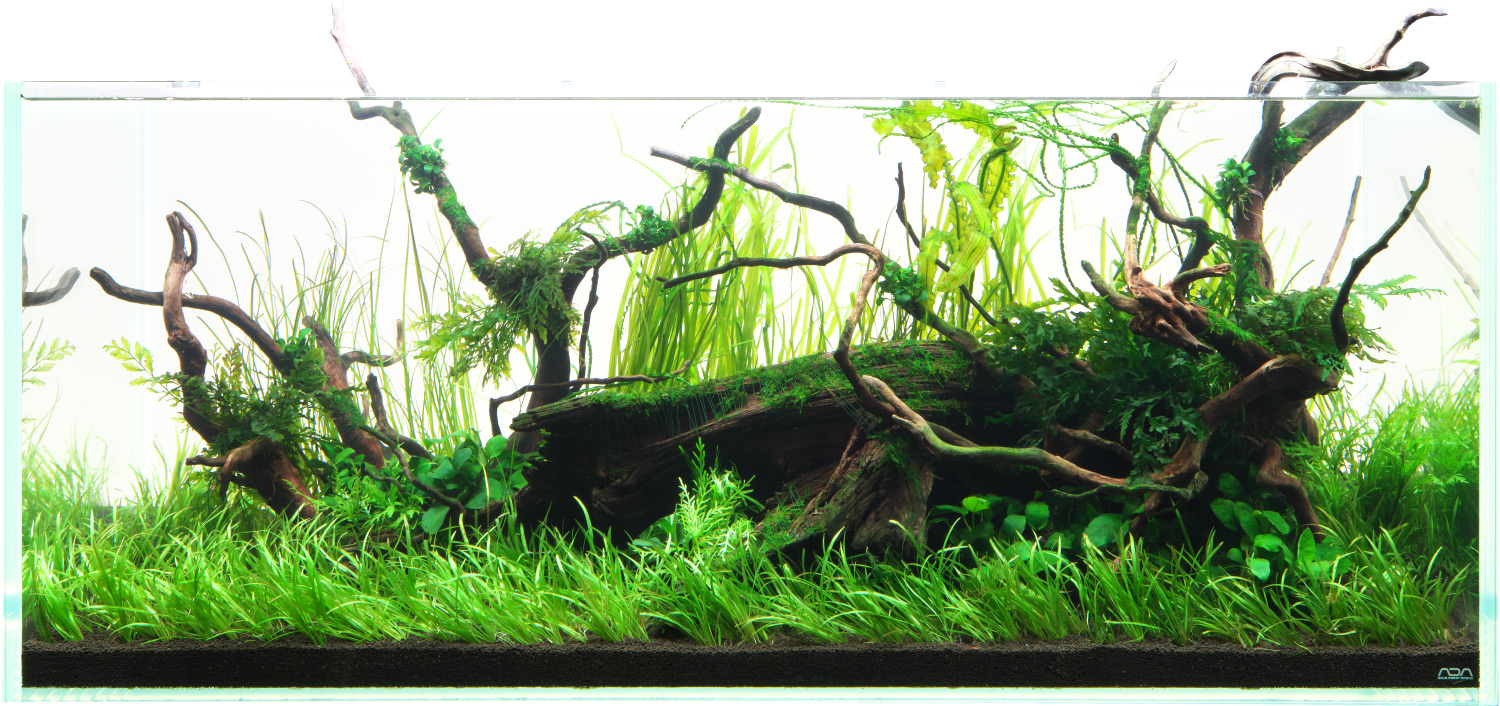
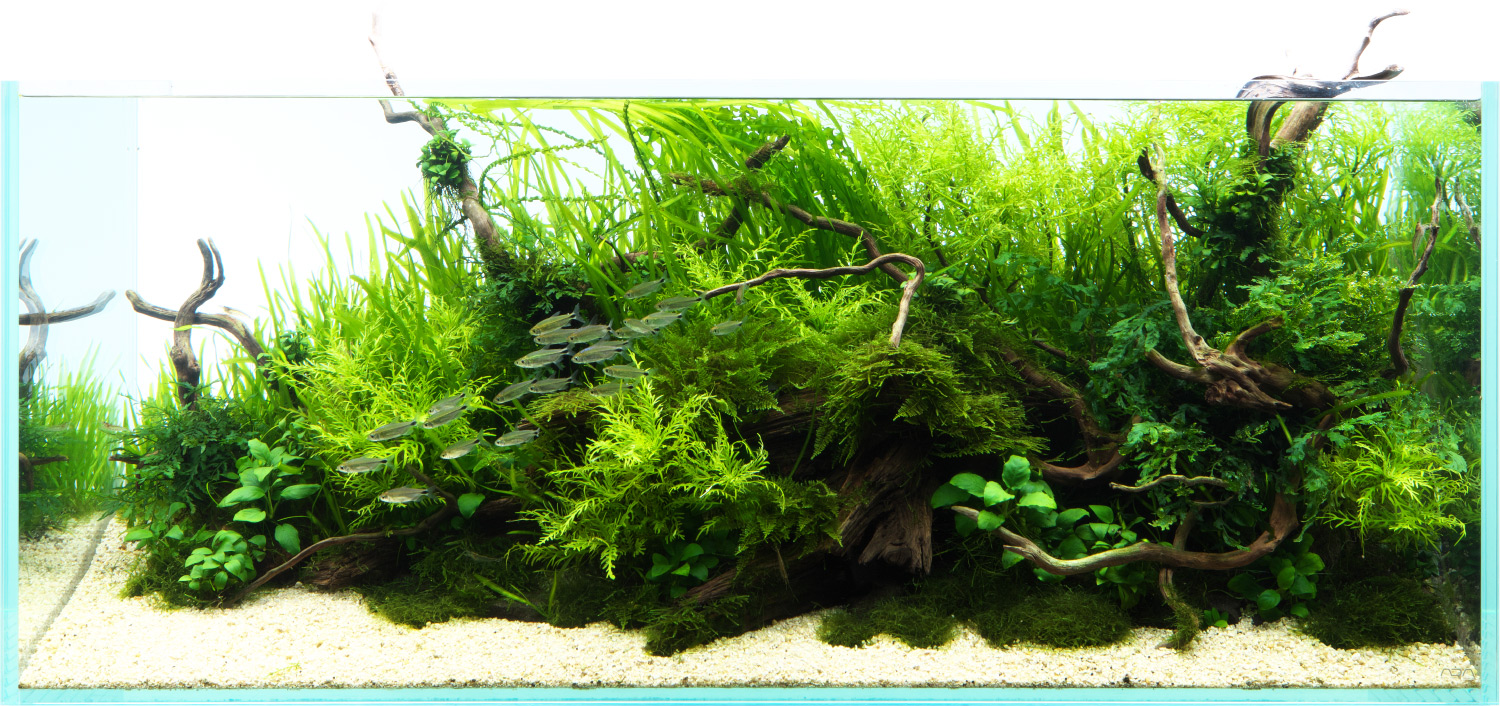
Please tell us the reason why you did the creative plant re-arranging and how the impression changed after the re-arrangement.
Araki: First of all, what I really want you to take notice of in this layout is that I mixed 2 types of materials such as Horn Wood and Branch Wood. The aquascape looks full of wildness from the composition reminiscent of a fallen tree and young trees sprouting around the fallen tree. I used stem plants in the background for the first planting. It was fine, but the wild impression of the 2 driftwood types got weaker as the stem plants flourished. So, with the creative plant re-arrangement, the background is uniform in green tape type aquatic plants. And I wanted to have the presence and wildness of the old tree and young trees which are the theme for this aquascape, stand out even more.
Are there any differences in maintenance between tape type aquatic plants and stem plants?
Araki: For stem plants, there are a lot of complicated tasks such as trimming and replanting in maintenance. As a result, the background may look messy. On the other hand, tape type aquatic plants quickly develop many runners that crawl sideways and expand its occupied area on their own. For that reason, it is necessary to treat runners moderately not to make them spread out too much. These differences in growth strategies by aquatic plant species are interesting, and that’s something I would like to incorporate into my expression as changes over time.
Araki: First of all, what I really want you to take notice of in this layout is that I mixed 2 types of materials such as Horn Wood and Branch Wood. The aquascape looks full of wildness from the composition reminiscent of a fallen tree and young trees sprouting around the fallen tree. I used stem plants in the background for the first planting. It was fine, but the wild impression of the 2 driftwood types got weaker as the stem plants flourished. So, with the creative plant re-arrangement, the background is uniform in green tape type aquatic plants. And I wanted to have the presence and wildness of the old tree and young trees which are the theme for this aquascape, stand out even more.
Are there any differences in maintenance between tape type aquatic plants and stem plants?
Araki: For stem plants, there are a lot of complicated tasks such as trimming and replanting in maintenance. As a result, the background may look messy. On the other hand, tape type aquatic plants quickly develop many runners that crawl sideways and expand its occupied area on their own. For that reason, it is necessary to treat runners moderately not to make them spread out too much. These differences in growth strategies by aquatic plant species are interesting, and that’s something I would like to incorporate into my expression as changes over time.
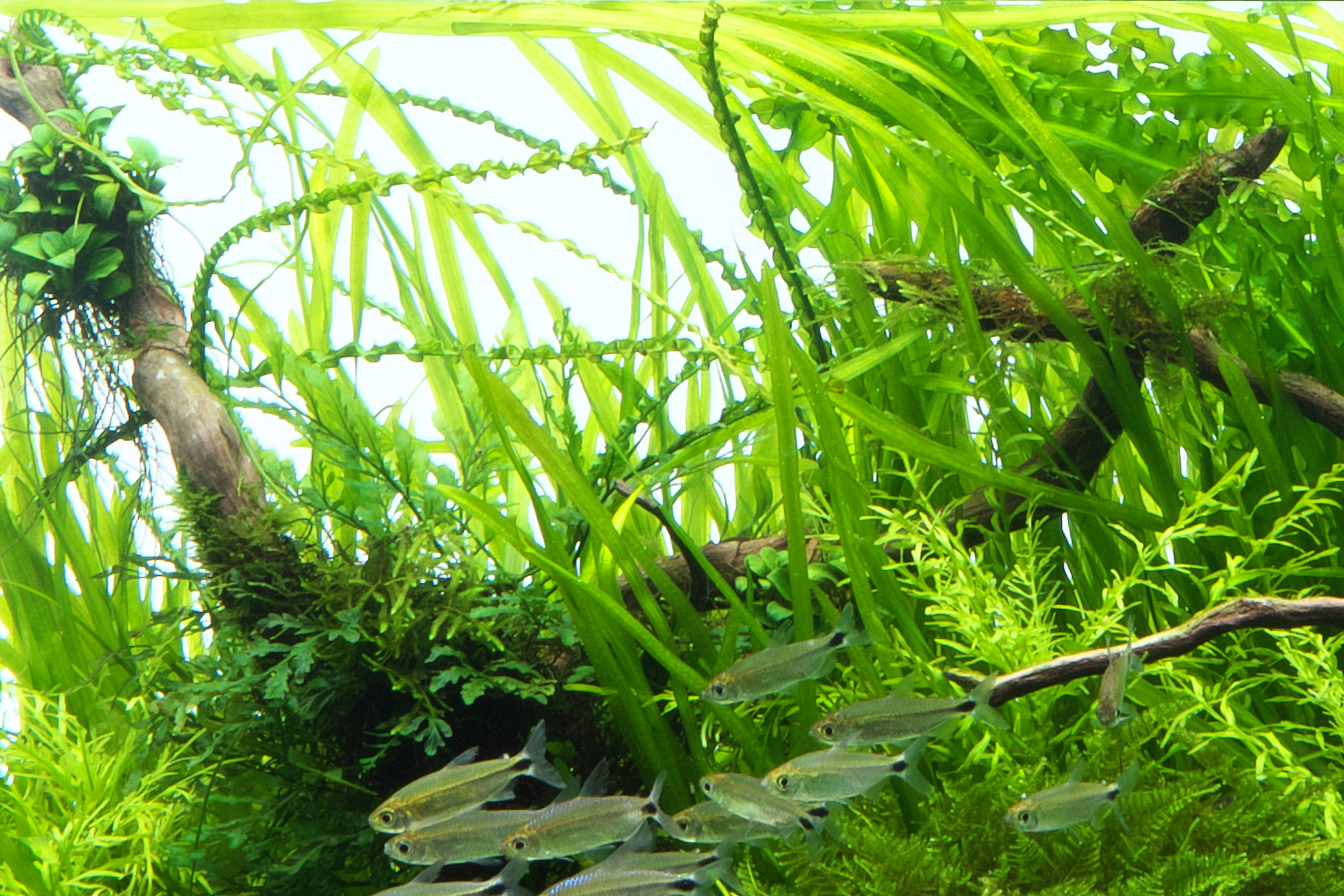
Change of the background plant
Tape type aquatic plants that softly unfold leaves have different charms from stem plants, and make us realize the flow of water.
Tape type aquatic plants that softly unfold leaves have different charms from stem plants, and make us realize the flow of water.
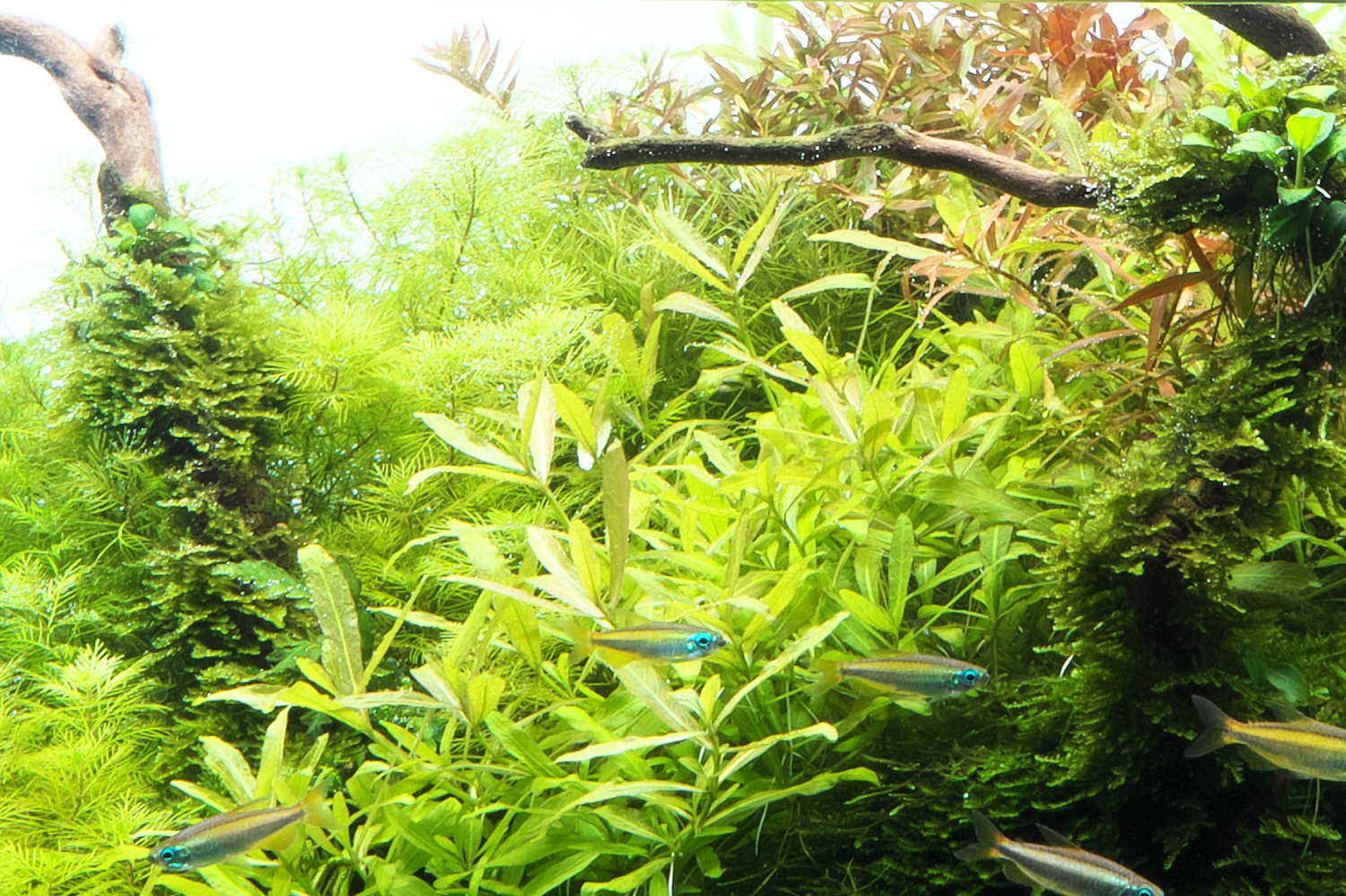
Why did you change from foreground plants to cosmetic sand for the foreground?
Araki: When I changed from stem plants to tape type aquatic plants in the background, I initially planted Echinodorus tenellus var. broad leaf as a foreground plant. For Echinodorus tenellus var. broad leaf, when the plant is larger, it looks wilder. I thought I could aim for an aquascape from the macro perspective. But, because the background and foreground ended up looking similar, the scenery looked too complicated. By eliminating the glitz of stem plants, the brightness disappeared from the whole aquascape. That’s the reason why I changed it to cosmetic sand. By replacing the stem plants with tape type aquatic plants, you can feel the flow of water even more. Because pebbles and coarse gravel are accumulated in a place where there is a stream of water, I used Tropical River Sand.
Were there any points that you particularly paid attention to when changing the aquatic plants?
Araki: Basically, red and yellow aquatic plants should be planted in the center of gravity in Nature Aquarium, and they can be eye-catching accents in aquascapes. However, because I wanted people to focus on the 2 types of driftwood, I purposely didn’t use red aquatic plants not to disperse the points that I wanted people to see. Additionally, a cautionary point when using many tape type aquatic plants is that the scenery with tape type aquatic plants tends to look monotonous unlike stem plants. So, it is important to give sharpness to the scenery to avoid such a situation. In this aquascape, the main plant is Aponogeton longiplumulosus. And I also used Hygrophila odora in the background and paid attention not to make it look too plain by changing the shape and color of leaves. Other points are the colors and gradation of the plant volume. By lowering the density of aquatic plant leaves as going toward the open space, even with the same green color, color shades are effectively expressed. As a result, you are able to give more natural and wild atmosphere to the aquascape.
Araki: When I changed from stem plants to tape type aquatic plants in the background, I initially planted Echinodorus tenellus var. broad leaf as a foreground plant. For Echinodorus tenellus var. broad leaf, when the plant is larger, it looks wilder. I thought I could aim for an aquascape from the macro perspective. But, because the background and foreground ended up looking similar, the scenery looked too complicated. By eliminating the glitz of stem plants, the brightness disappeared from the whole aquascape. That’s the reason why I changed it to cosmetic sand. By replacing the stem plants with tape type aquatic plants, you can feel the flow of water even more. Because pebbles and coarse gravel are accumulated in a place where there is a stream of water, I used Tropical River Sand.
Were there any points that you particularly paid attention to when changing the aquatic plants?
Araki: Basically, red and yellow aquatic plants should be planted in the center of gravity in Nature Aquarium, and they can be eye-catching accents in aquascapes. However, because I wanted people to focus on the 2 types of driftwood, I purposely didn’t use red aquatic plants not to disperse the points that I wanted people to see. Additionally, a cautionary point when using many tape type aquatic plants is that the scenery with tape type aquatic plants tends to look monotonous unlike stem plants. So, it is important to give sharpness to the scenery to avoid such a situation. In this aquascape, the main plant is Aponogeton longiplumulosus. And I also used Hygrophila odora in the background and paid attention not to make it look too plain by changing the shape and color of leaves. Other points are the colors and gradation of the plant volume. By lowering the density of aquatic plant leaves as going toward the open space, even with the same green color, color shades are effectively expressed. As a result, you are able to give more natural and wild atmosphere to the aquascape.
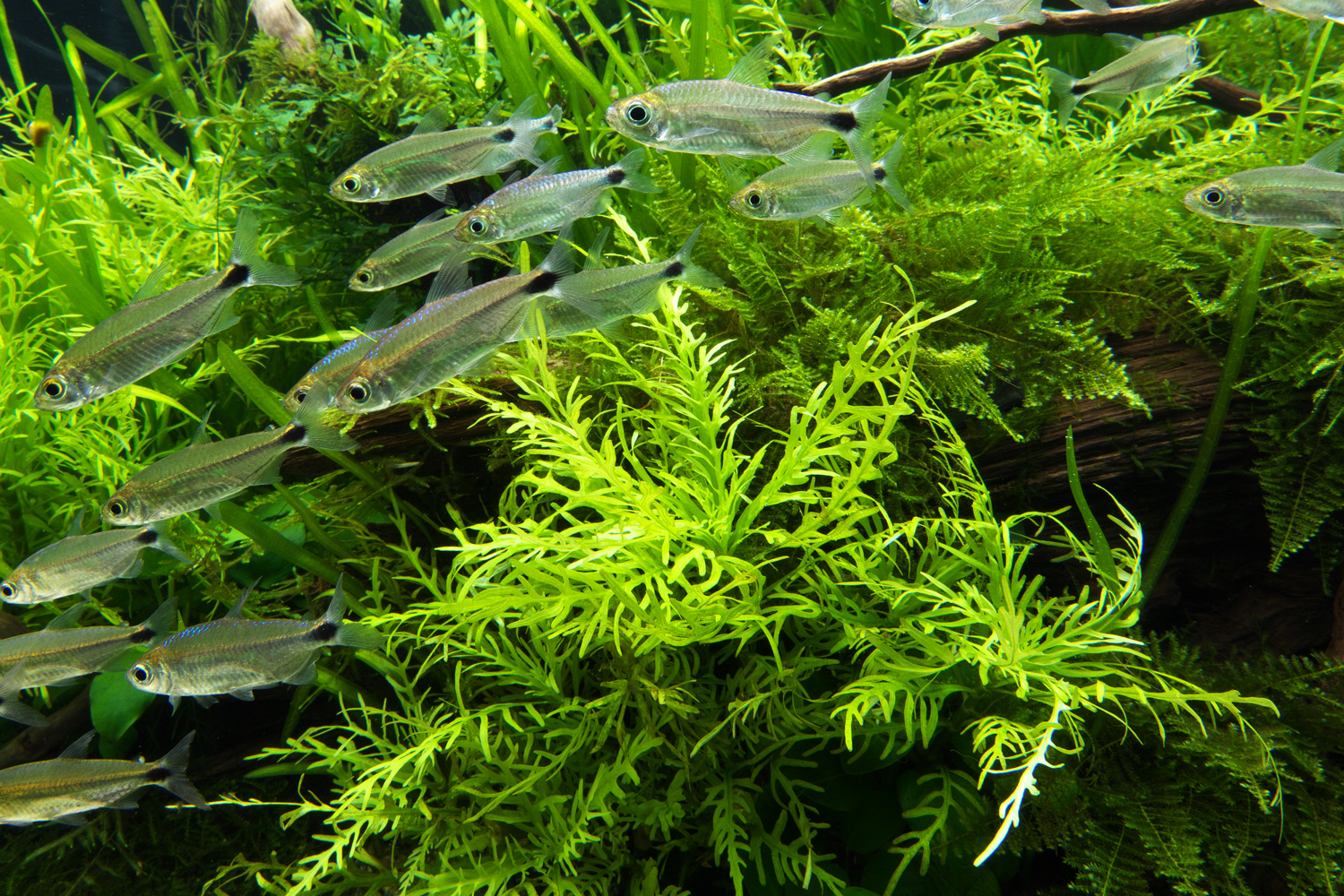
Hygrophila odora
The distinctive leaves that have lobes with deep incisions are impressive as accents in aquascapes. Because it is an aquatic plant native to Africa, I love incorporating them with Alestopetersius smykalai.
The distinctive leaves that have lobes with deep incisions are impressive as accents in aquascapes. Because it is an aquatic plant native to Africa, I love incorporating them with Alestopetersius smykalai.
